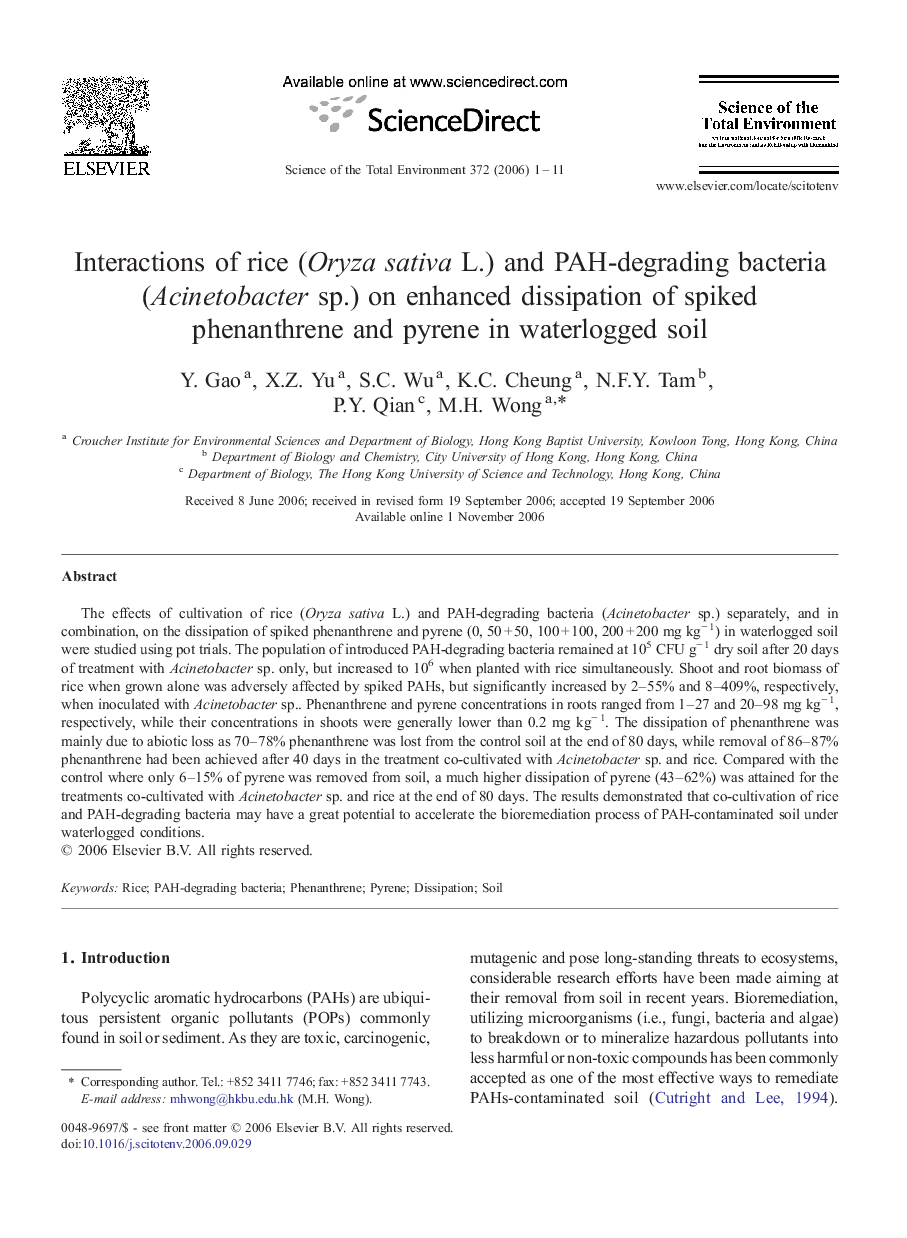| Article ID | Journal | Published Year | Pages | File Type |
|---|---|---|---|---|
| 4433591 | Science of The Total Environment | 2006 | 11 Pages |
The effects of cultivation of rice (Oryza sativa L.) and PAH-degrading bacteria (Acinetobacter sp.) separately, and in combination, on the dissipation of spiked phenanthrene and pyrene (0, 50 + 50, 100 + 100, 200 + 200 mg kg− 1) in waterlogged soil were studied using pot trials. The population of introduced PAH-degrading bacteria remained at 105 CFU g− 1 dry soil after 20 days of treatment with Acinetobacter sp. only, but increased to 106 when planted with rice simultaneously. Shoot and root biomass of rice when grown alone was adversely affected by spiked PAHs, but significantly increased by 2–55% and 8–409%, respectively, when inoculated with Acinetobacter sp.. Phenanthrene and pyrene concentrations in roots ranged from 1–27 and 20–98 mg kg− 1, respectively, while their concentrations in shoots were generally lower than 0.2 mg kg− 1. The dissipation of phenanthrene was mainly due to abiotic loss as 70–78% phenanthrene was lost from the control soil at the end of 80 days, while removal of 86–87% phenanthrene had been achieved after 40 days in the treatment co-cultivated with Acinetobacter sp. and rice. Compared with the control where only 6–15% of pyrene was removed from soil, a much higher dissipation of pyrene (43–62%) was attained for the treatments co-cultivated with Acinetobacter sp. and rice at the end of 80 days. The results demonstrated that co-cultivation of rice and PAH-degrading bacteria may have a great potential to accelerate the bioremediation process of PAH-contaminated soil under waterlogged conditions.
